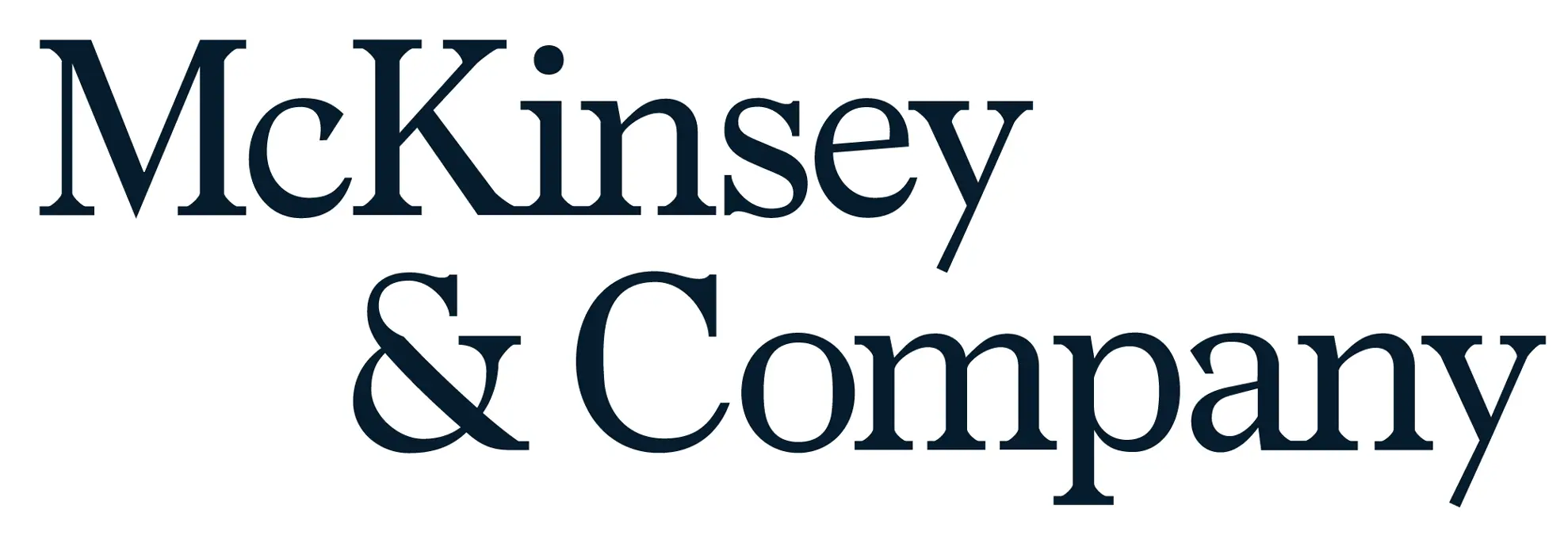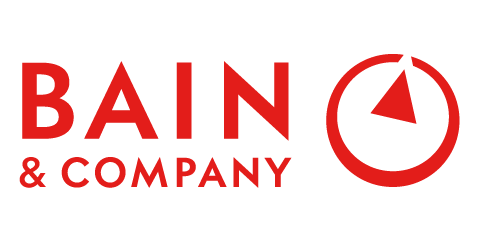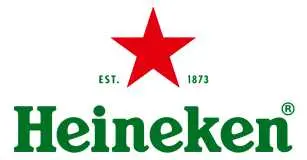
E-Commerce Logistics and Warehousing Market Growth, Trends, Revenue and Future Share 2032
Global E-Commerce Logistics and Warehousing Market Size- By Service Type, By Vertical, By Operation Area, By Type, By Model- Regional Outlook, Competitive Strategies and Segment Forecast to 2032
| Published: Dec-2022 | Report ID: AMIN2206 | Pages: 1 - 229 | Formats*: |
| Category : Automotive & Transportation | |||
- The thriving logistics and warehousing sector is primarily driven by the e-commerce industry's rapid rise. As consumers increasingly favor online shopping for its convenience and accessibility, merchants must grow their operations to satisfy the rising demand for fast and dependable deliveries. This increase in e-commerce activity directly correlates to a greater requirement for effective logistics and warehousing solutions.
- Growing Customer Expectations: Customers now anticipate faster and more flexible delivery alternatives, such as same-day and next-day delivery. Meeting these heightened expectations necessitates strong logistics and warehousing skills. Retailers and logistics providers invest in infrastructure improvements to remain competitive in fulfilling changing customer needs.
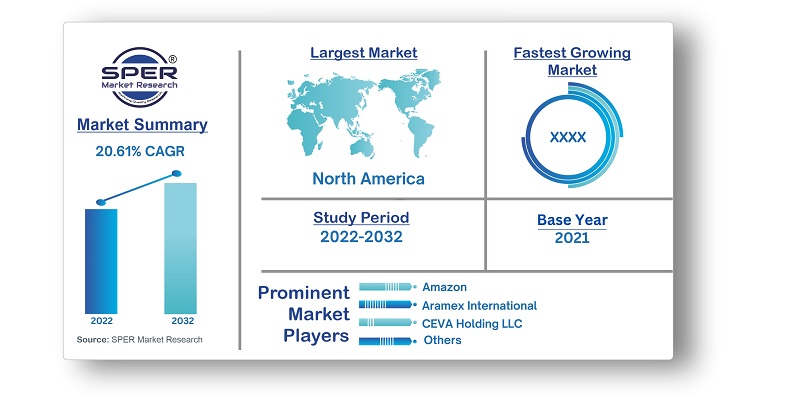
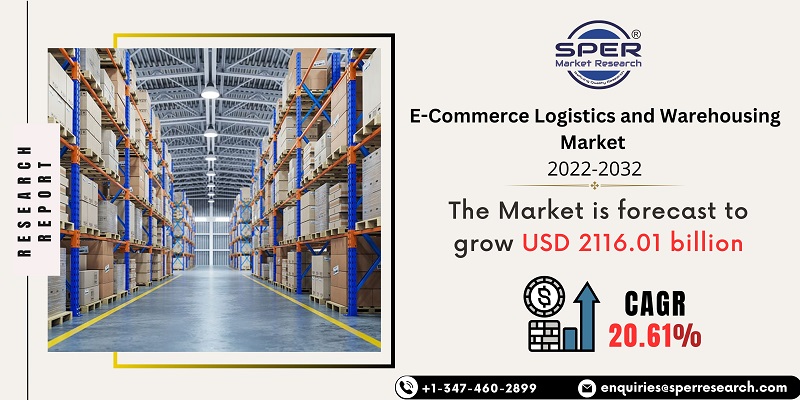
| Report Metric | Details |
| Market size available for years | 2019-2032 |
| Base year considered | 2021 |
| Forecast period | 2022-2032 |
| Segments covered | By Service Type, By Vertical, By Operation Area, By Type, By Model |
| Regions covered | Asia-Pacific, Europe, Middle East and Africa, North America, Latin America |
| Companies Covered | Amazon, Aramex International, CEVA Holding LLC, Clipper Logistics Plc, DHL International GmbH, Exo Logistics Plc, Inc., FedEx Corporation, Gati Limited, K.S.C.P. Agility Public Warehousing, Kenco Group, Inc., S.F. Express, United Parcel Service, Inc, XPO Logistics Plc. |
- Third Party Logistics
- E-Commerce Retailers and Online Businesses
- Technology Providers
- Investors and Venture
| By Vertical: |
|
| By Operational Area: |
|
| By Type: |
|
| By Model: |
|
- Global E-Commerce Logistics and Warehousing Market Size (FY’2022-FY’2032)
- Overview of Global E-Commerce Logistics and Warehousing Market
- Segmentation of Global E-Commerce Logistics and Warehousing Market By Service Type (Transportation (Air/Express Delivery, Freight/Rail, Trucking/Over Road, Maritime), Warehousing (Mega Centers, Hubs/Delivery Centers, Returns Processing Centers), Other Services)
- Segmentation of Global E-Commerce Logistics and Warehousing Market By Vertical (Apparel, Consumer Electronics, Automotive, Healthcare, Food and Beverages, Others)
- Segmentation of Global E-Commerce Logistics and Warehousing Market By Operational Area (Domestic E-Commerce, International E-Commerce)
- Segmentation of Global E-Commerce Logistics and Warehousing Market By Type (Forward Logistics, Reverse Logistics)
- Segmentation of Global E-Commerce Logistics and Warehousing Market By Model (3 PL, 4 PL, Others)
- Statistical Snap of Global E-Commerce Logistics and Warehousing Market
- Expansion Analysis of Global E-Commerce Logistics and Warehousing Market
- Problems and Obstacles in Global E-Commerce Logistics and Warehousing Market
- Competitive Landscape in the Global E-Commerce Logistics and Warehousing Market
- Impact of COVID-19 and Demonetization on Global E-Commerce Logistics and Warehousing Market
- Details on Current Investment in Global E-Commerce Logistics and Warehousing Market
- Competitive Analysis of Global E-Commerce Logistics and Warehousing Market
- Prominent Players in the Global E-Commerce Logistics and Warehousing Market
- SWOT Analysis of Global E-Commerce Logistics and Warehousing Market
- Global E-Commerce Logistics and Warehousing Market Future Outlook and Projections (FY’2022-FY’2032)
- Recommendations from Analyst
1.1. Scope of the report1.2. Market segment analysis
2.1 Research data source
2.1.1 Secondary data2.1.2 Primary data2.1.3 SPER’s internal database2.1.4 Premium insight from KOL’s
2.2 Market size estimation
2.2.1 Top-down and Bottom-up approach
2.3 Data triangulation
4.1. Driver, Restraint, Opportunity and Challenges analysis
4.1.1 Drivers4.1.2 Restraints4.1.3 Opportunities4.1.4 Challenges
4.2. COVID-19 Impacts of the Global E-Commerce Logistics and Warehousing Market
5.1. SWOT analysis
5.1.1 Strengths5.1.2 Weaknesses5.1.3 Opportunities5.1.4 Threats
5.2. PESTEL analysis
5.2.1 Political landscape5.2.2 Economic landscape5.2.3 Social landscape5.2.4 Technological landscape
5.2.5 Environmental landscape5.2.6 Legal landscape
5.3. PORTER’S five forces analysis
5.3.1 Bargaining power of suppliers5.3.2 Bargaining power of Buyers5.3.3 Threat of Substitute5.3.4 Threat of new entrant5.3.5 Competitive rivalry
5.4. Heat map analysis
6.1 Transportation
6.1.1 Air/Express Delivery6.1.2 Freight/Rail6.1.3 Trucking/ Over Road6.1.4 Maritime
6.2 Warehousing
6.2.1 Mega Centers6.2.2 Hubs/Delivery Centers6.2.3 Returns Processing Centers
6.3 Other Services
7.1. Apparel7.2. Consumer Electronics7.3. Automotive7.4. Healthcare7.5. Food and Beverages7.6. Others
8.1. Domestic E-Commerce8.2. International (Cross Border) E-Commerce
9.1. Forward Logistics9.2. Reverse Logistics
10.1 3PL10.2 4PL10.3 Others
11.1 North America
11.1.1. United States11.1.2. Canada11.1.3. Mexico
11.2 Europe
11.2.1. Germany11.2.2. United Kingdom11.2.3. France11.2.4. Italy11.2.5. Spain11.2.6. Rest of Europe
11.3 Asia-Pacific
11.3.1. China11.3.2. Japan11.3.3. India11.3.4. Australia11.3.5. South Korea11.3.6. Rest of Asia-Pacific
11.4 South America
11.4.1. Brazil11.4.2. Argentina11.4.3. Rest of South America
11.5 Middle East & Africa
11.5.1. Kingdom of Saudi Arabia11.5.2. United Arab Emirates11.5.3. Rest of Middle East & Africa
12.1.1. Company details12.1.2. Financial outlook12.1.3. Product summary12.1.4. Recent developments
12.2.1. Company details12.2.2. Financial outlook12.2.3. Product summary12.2.4. Recent developments
12.3.1. Company details12.3.2. Financial outlook12.3.3. Product summary12.3.4. Recent developments
12.4.1. Company details12.4.2. Financial outlook12.4.3. Product summary12.4.4. Recent developments
12.5.1. Company details12.5.2. Financial outlook12.5.3. Product summary12.5.4. Recent developments
12.6.1. Company details12.6.2. Financial outlook12.6.3. Product summary12.6.4. Recent developments
12.7.1. Company details12.7.2. Financial outlook12.7.3. Product summary12.7.4. Recent developments
12.8.1. Company details12.8.2. Financial outlook12.8.3. Product summary12.8.4. Recent developments
12.9.1. Company details12.9.2. Financial outlook12.9.3. Product summary12.9.4. Recent developments
12.10.1. Company details12.10.2. Financial outlook12.10.3. Product summary12.10.4. Recent developments
12.11.1. Company details12.11.2. Financial outlook12.11.3. Product summary12.11.4. Recent developments
12.12.1. Company details12.12.2. Financial outlook12.12.3. Product summary12.12.4. Recent developments
12.13.1. Company details12.13.2. Financial outlook12.13.3. Product summary12.13.4. Recent developments
SPER Market Research’s methodology uses great emphasis on primary research to ensure that the market intelligence insights are up to date, reliable and accurate. Primary interviews are done with players involved in each phase of a supply chain to analyze the market forecasting. The secondary research method is used to help you fully understand how the future markets and the spending patterns look likes.
The report is based on in-depth qualitative and quantitative analysis of the Product Market. The quantitative analysis involves the application of various projection and sampling techniques. The qualitative analysis involves primary interviews, surveys, and vendor briefings. The data gathered as a result of these processes are validated through experts opinion. Our research methodology entails an ideal mixture of primary and secondary initiatives.
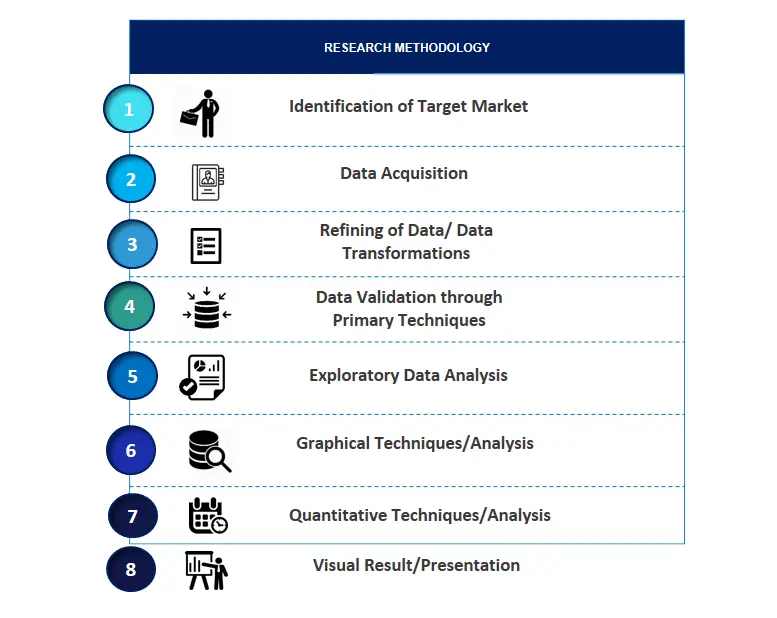
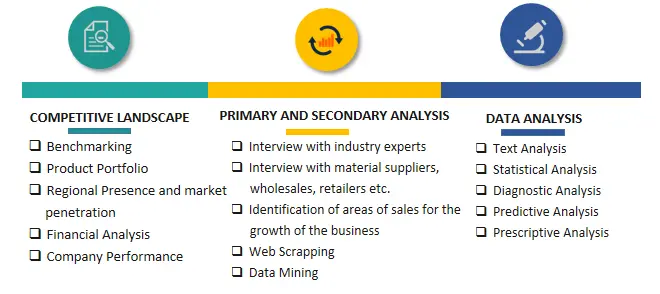

Frequently Asked Questions About This Report
PLACE AN ORDER
Year End Discount
Sample Report
Pre-Purchase Inquiry
NEED CUSTOMIZATION?
Request CustomizationCALL OR EMAIL US
100% Secure Payment






Related Reports
Our Global Clients
Our data-driven insights have influenced the strategy of 200+ reputed companies across the globe.






